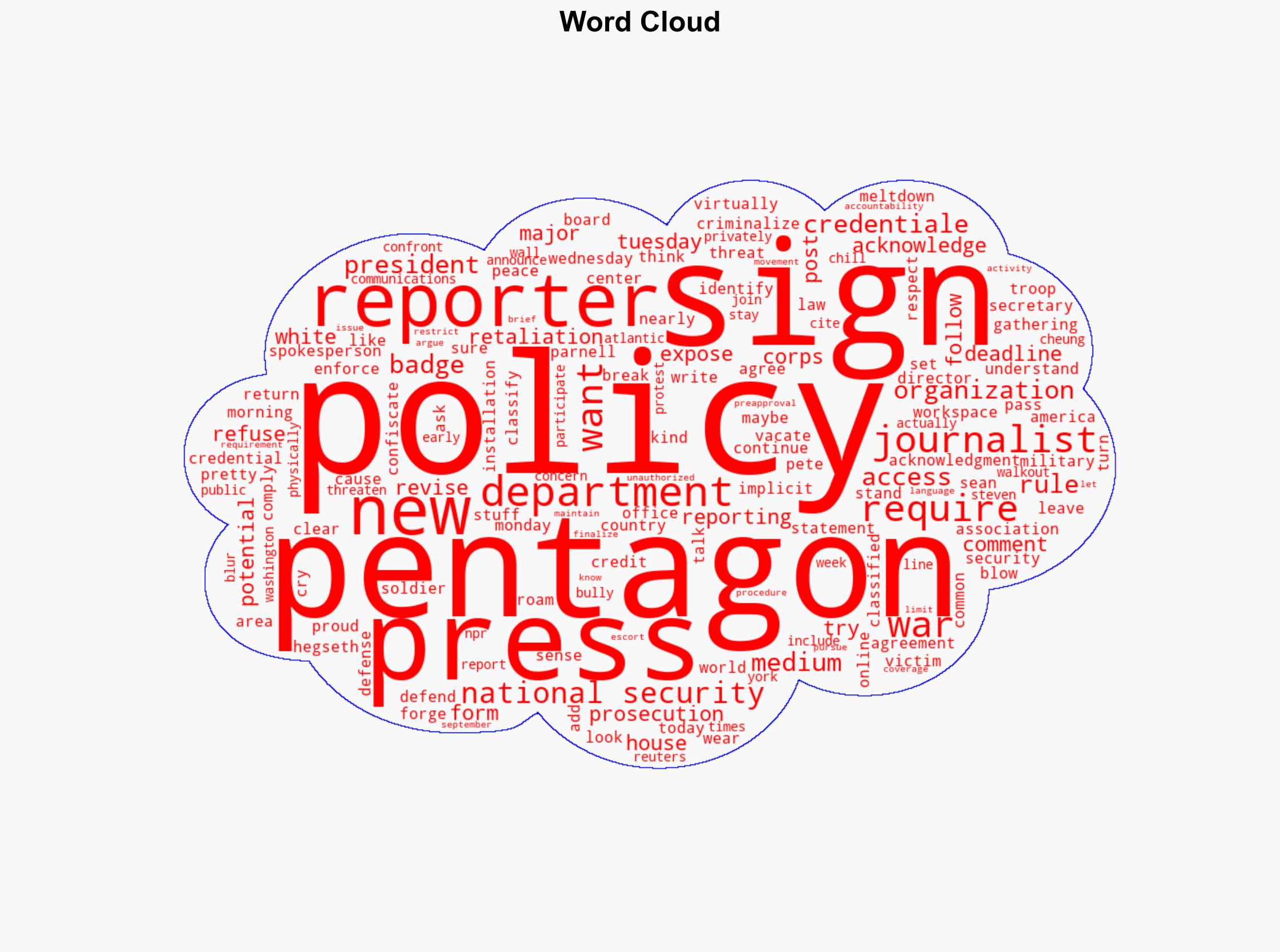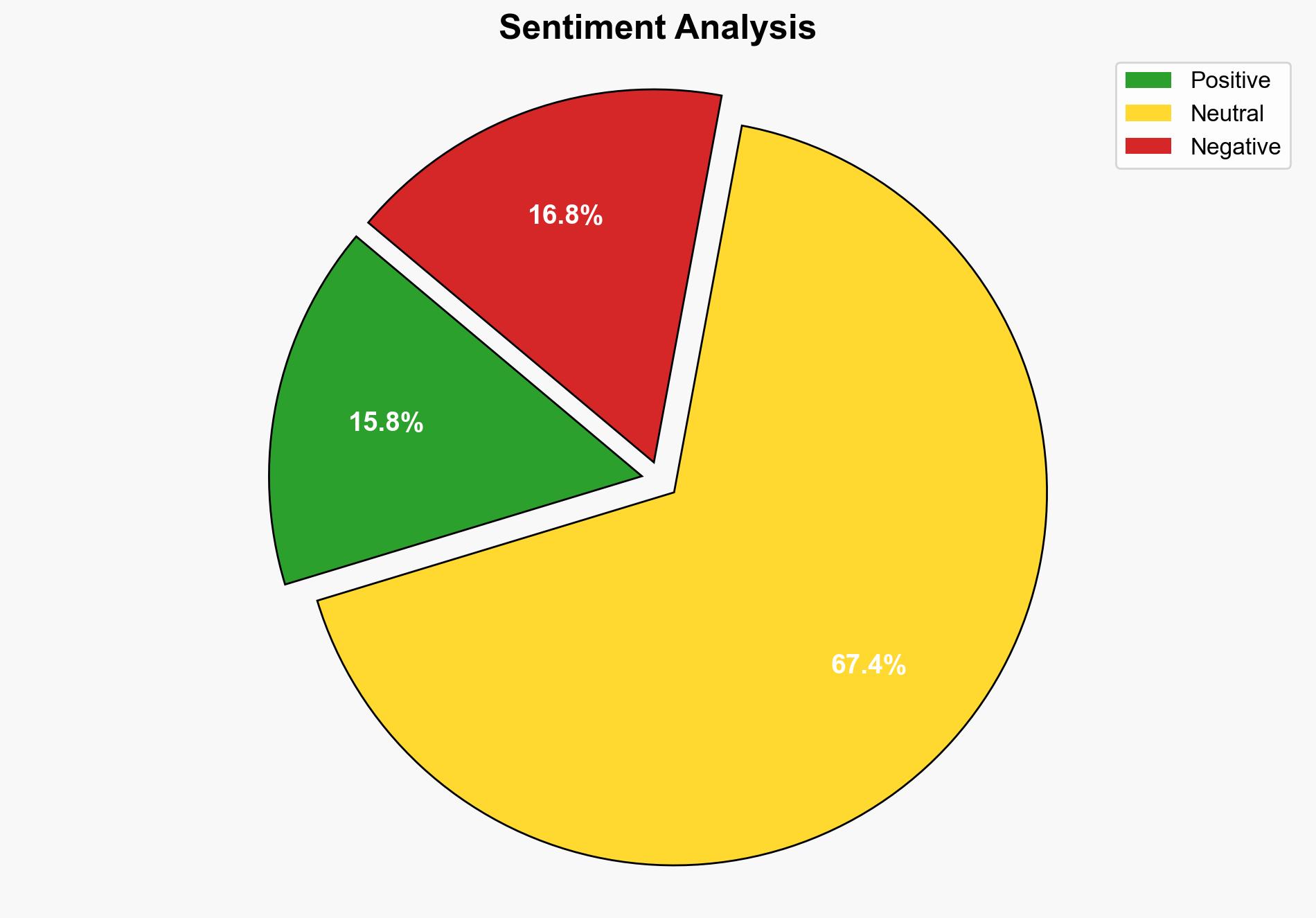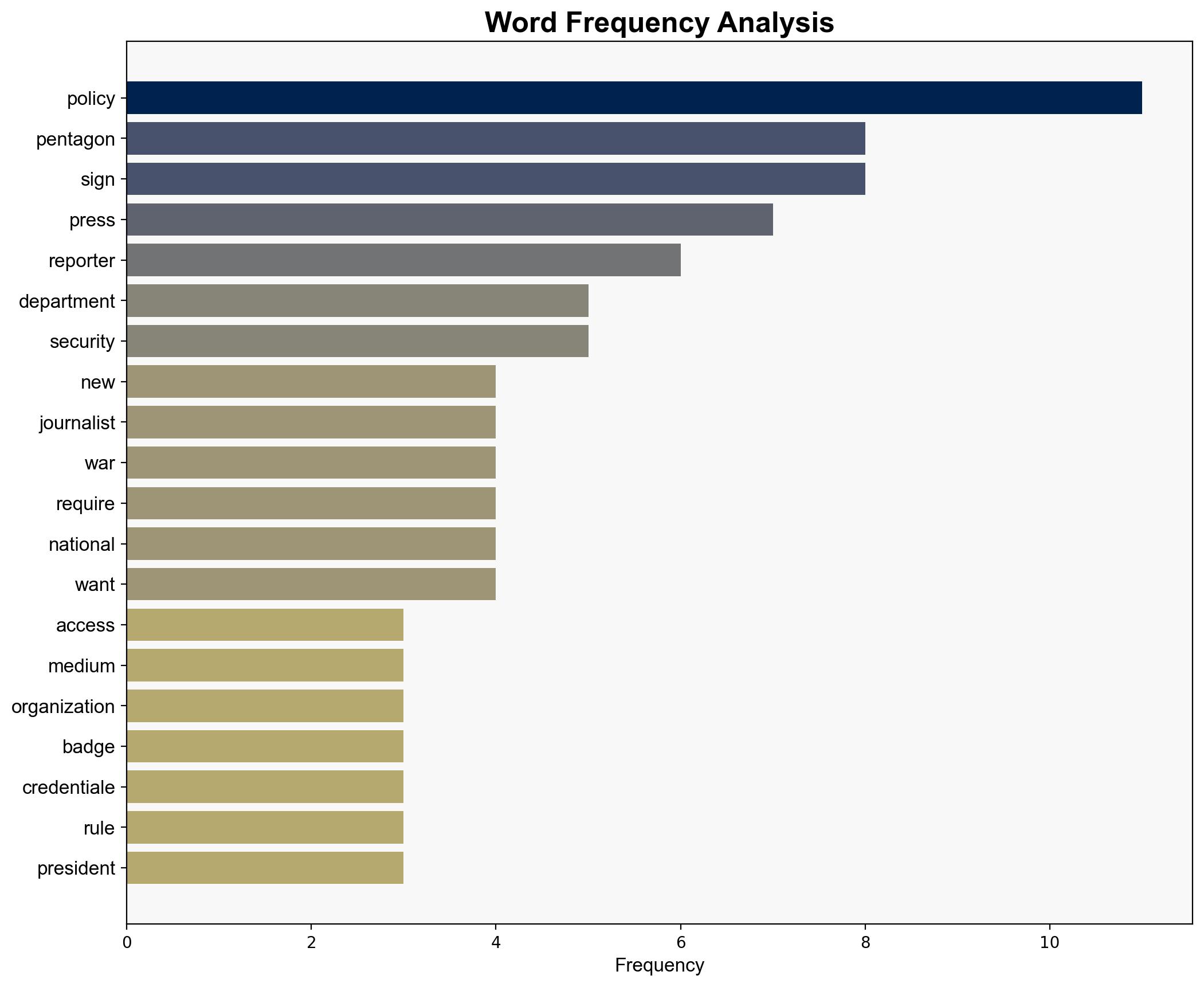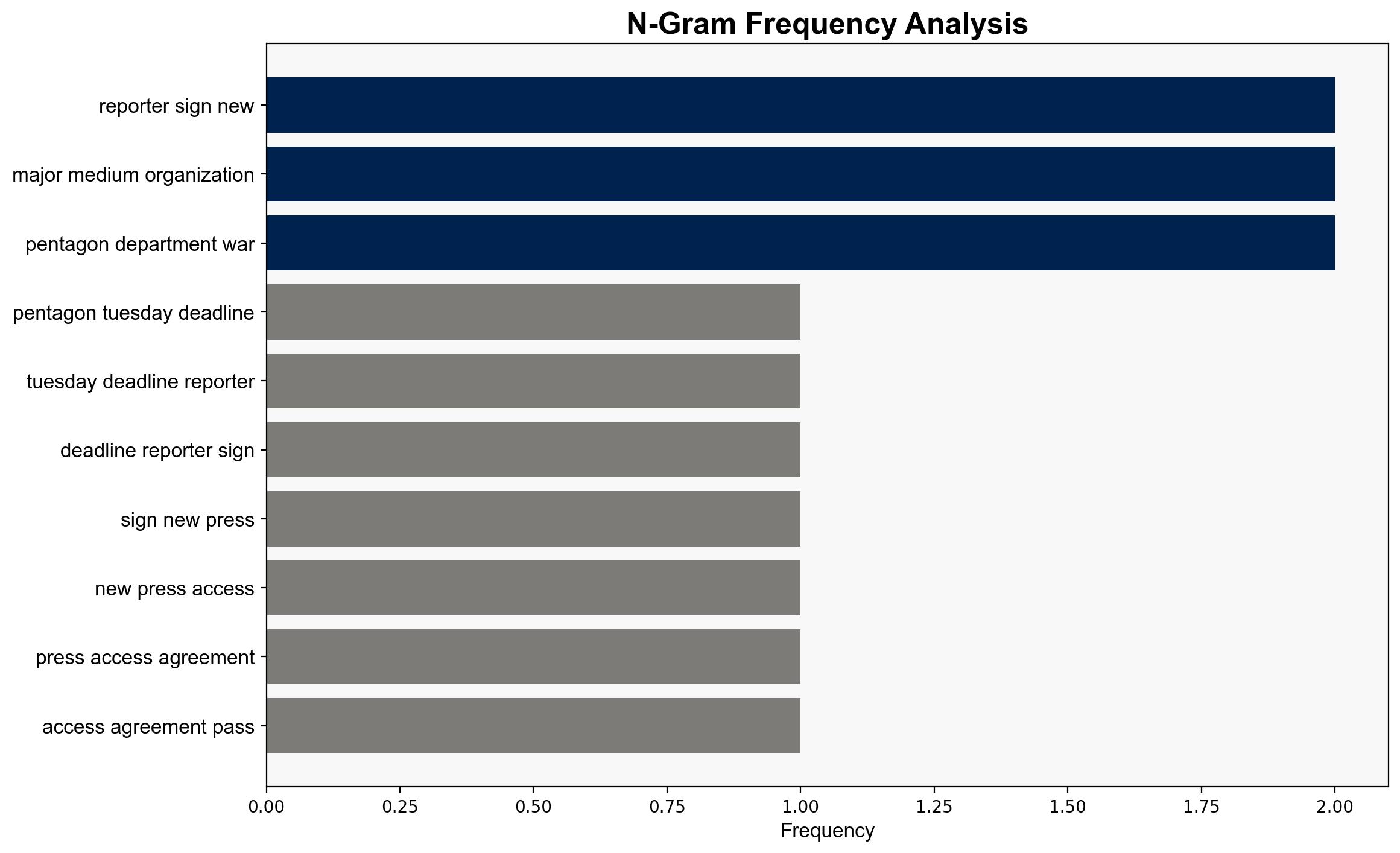Reporters Turn in Their Badges over Recent Pentagon Press Rules – Breitbart News
Published on: 2025-10-16
Intelligence Report: Reporters Turn in Their Badges over Recent Pentagon Press Rules – Breitbart News
1. BLUF (Bottom Line Up Front)
The most supported hypothesis suggests that the new Pentagon press rules are primarily aimed at enhancing national security by controlling sensitive information access. This is supported by the Pentagon’s emphasis on security procedures and the requirement for journalists to acknowledge these rules. Confidence level: Moderate. Recommended action: Monitor the situation for potential impacts on press freedom and national security balance.
2. Competing Hypotheses
1. **Hypothesis A**: The Pentagon’s new press rules are primarily designed to enhance national security by restricting unauthorized access and potential leaks of sensitive information. This is supported by the Pentagon’s emphasis on security procedures and the requirement for journalists to acknowledge these rules.
2. **Hypothesis B**: The new press rules are a strategic move to suppress investigative journalism and limit media scrutiny of the Pentagon’s activities, potentially stifling public accountability. This is suggested by the backlash from major media organizations and concerns over potential prosecution for unauthorized reporting.
Using the Analysis of Competing Hypotheses (ACH) 2.0, Hypothesis A is better supported due to the explicit focus on security procedures in the policy, although Hypothesis B cannot be dismissed given the media’s strong opposition and concerns about press freedom.
3. Key Assumptions and Red Flags
– **Assumptions**:
– Hypothesis A assumes the Pentagon’s primary intention is national security, not media control.
– Hypothesis B assumes the Pentagon’s policy is primarily aimed at suppressing media freedom.
– **Red Flags**:
– Lack of transparency in how the rules were developed and communicated.
– Potential cognitive bias from media organizations interpreting the rules as a direct threat to press freedom.
– Inconsistent data regarding the specific nature of threats that necessitate such stringent rules.
4. Implications and Strategic Risks
– **Implications**:
– The policy could lead to a chilling effect on investigative journalism, impacting public accountability.
– Heightened tensions between the media and the Pentagon could escalate, affecting public perception and trust.
– **Strategic Risks**:
– Potential for increased misinformation if journalists are restricted from accessing and reporting on critical defense-related issues.
– Geopolitical risks if perceived as a move towards authoritarian control over media.
5. Recommendations and Outlook
- Engage in dialogue between the Pentagon and media organizations to address concerns and clarify the intent of the rules.
- Monitor for any legal challenges or changes in media reporting practices as a result of the new policy.
- Scenario Projections:
- Best: Rules are clarified and adjusted to balance security with press freedom, maintaining public trust.
- Worst: Escalation of tensions leads to legal battles and reduced transparency in defense reporting.
- Most Likely: Continued negotiation and adaptation of rules with gradual acceptance by media organizations.
6. Key Individuals and Entities
– Sean Parnell
– Pete Hegseth
– Steven Cheung
– Media organizations: Washington Post, New York Times, Reuters, Atlantic, NPR
7. Thematic Tags
national security threats, press freedom, media relations, defense policy





